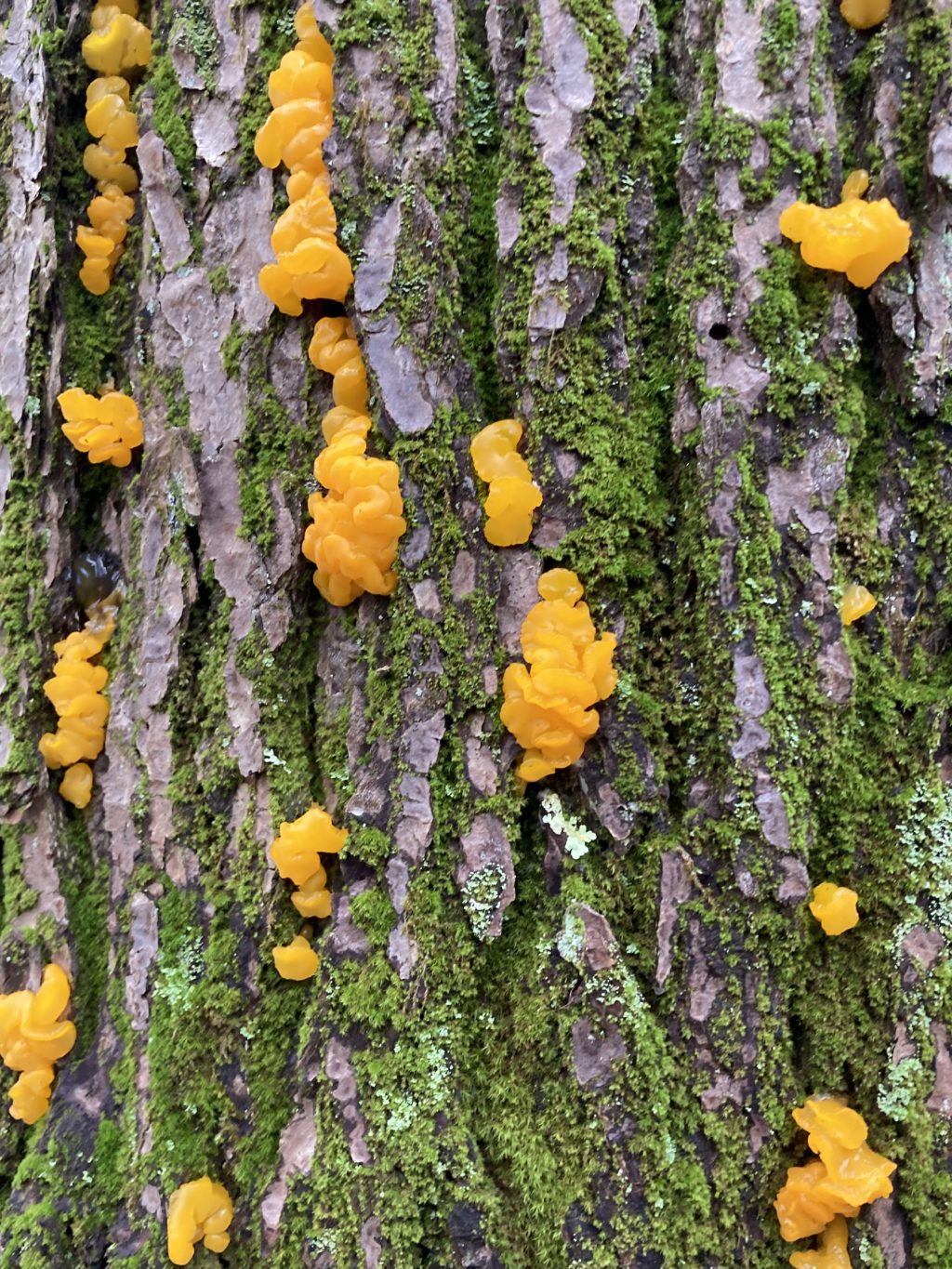Almanac: Jellies

A feast for color-starved eyes in the winter woods: orange jelly fungi. Photo: Stephen Braun
At this time of year the color palette of the woods and fields has gone mostly monochrome. Those scenes of brown, grey, and tan can be plenty beautiful, for sure, but they also provide a relatively bland backdrop for occasional splashes of vivid color: scarlet wintergreen berries or emerald moss brilliantly backlit by the sun, for example.
On a hike up Mt. Lincoln in Pelham the other day, the moss-covered bark of a dead hemlock provided a lovely contrast for some eye-popping spots of bright orange: jelly fungi. This large family of fungi come in a rainbow of colors and an array of gelatinous shapes that can resemble ears or brains, which may be one reason they can elicit an initial “yuck” response. But give these diminutive life forms a chance if you come across them. None are poisonous—in fact most are edible, although reported to be either just tasteless or tasteless combined with a mild tingling or cool sensation on the tongue.
That the orange jellies I saw were so plump and healthy-looking at a time when nearly all other fungi have disappeared or gone dormant is a testament to their hardiness. Their tissues are highly expandable, collapsing to nearly colorless splotches in dry conditions, then rapidly plumping up with rain. They’re often the first fungi you notice in early spring and the last you notice before the snow flies.
Orange jellies prefer dead conifers while several other species of jelly fungus, typically more yellow than orange, prefer hardwoods and go by the common name “witches’ butter.” Jelly fungi have no stem and no gills or visible pores like their more familiar brethren, but the glistening surface of jellies is covered with the microscopic spore-producing structures called basidia, which are also present in the fruiting bodies of most, but not all, mushrooms.
Like mushrooms, the colorful jellies we see are just the easily-visible reproductive stage of the fungus, the more long-lasting part being the thin webs of hyphae that penetrate soil, wood, or other substrates and actually perform the bulk of the metabolic and structural work of any fungal species. So if you’d like to nibble on a jelly next time you see one, don’t feel bad about plucking it–it’s like picking an apple. Except, I suspect, a whole lot less satisfying.
Almanac is a regular Indy column of observations, musings, and occasional harangues related to the woods, waters, mountains, and skies of the Pioneer Valley. Please feel free to comment on posts and add your own experiences or observations.
